Carved Staff Or Wand Item Number: E88833-0 from the National Museum of Natural History
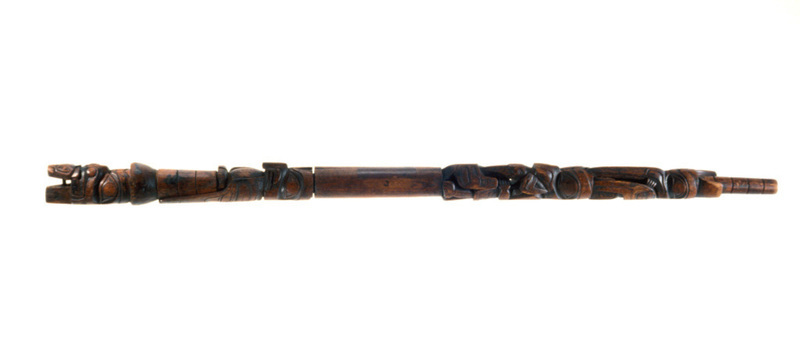




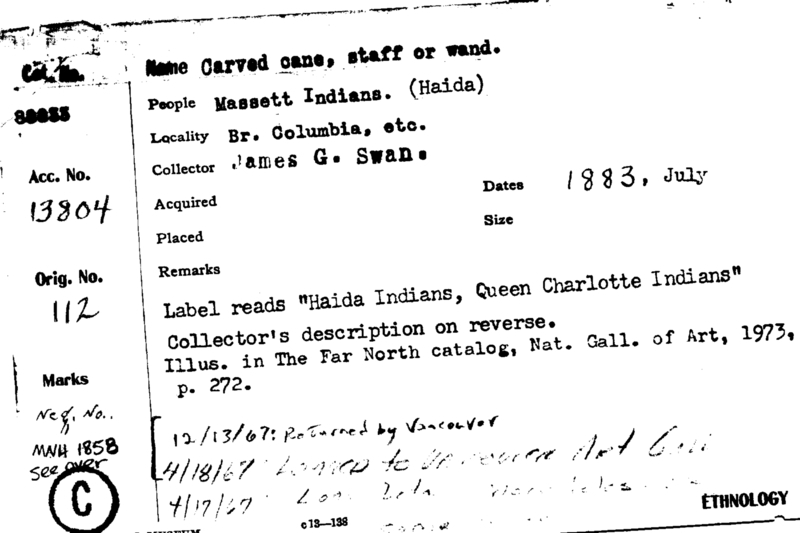
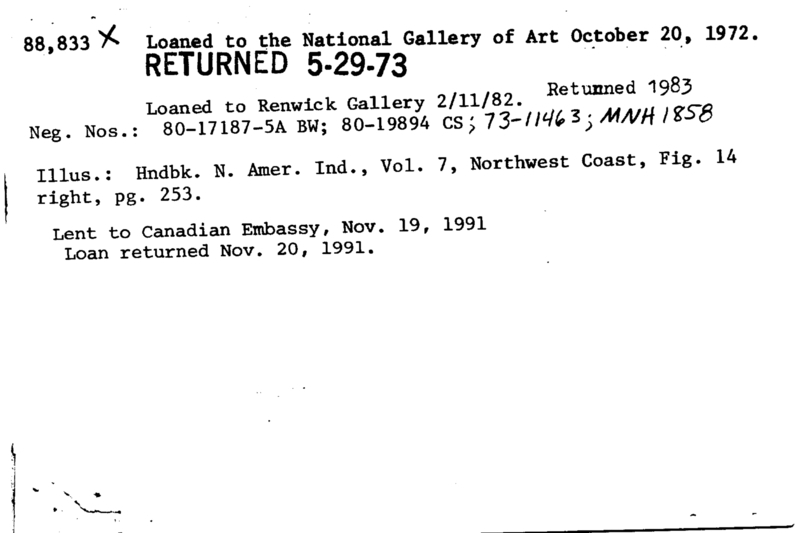

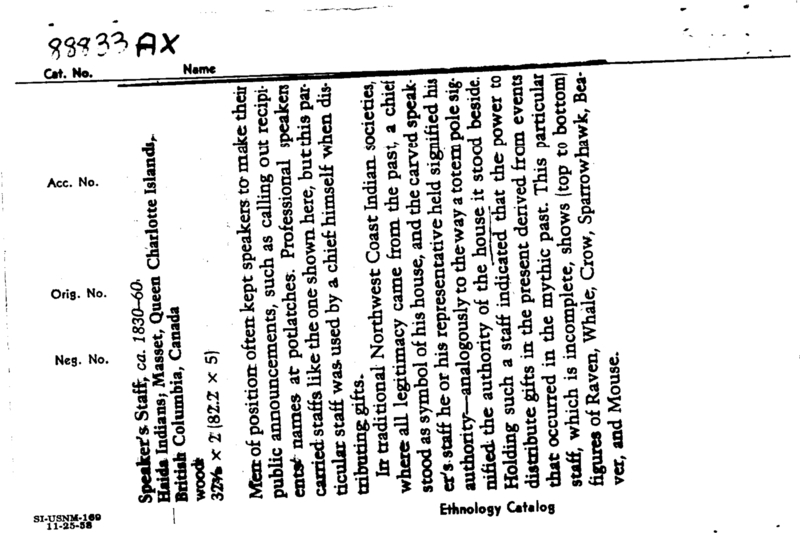
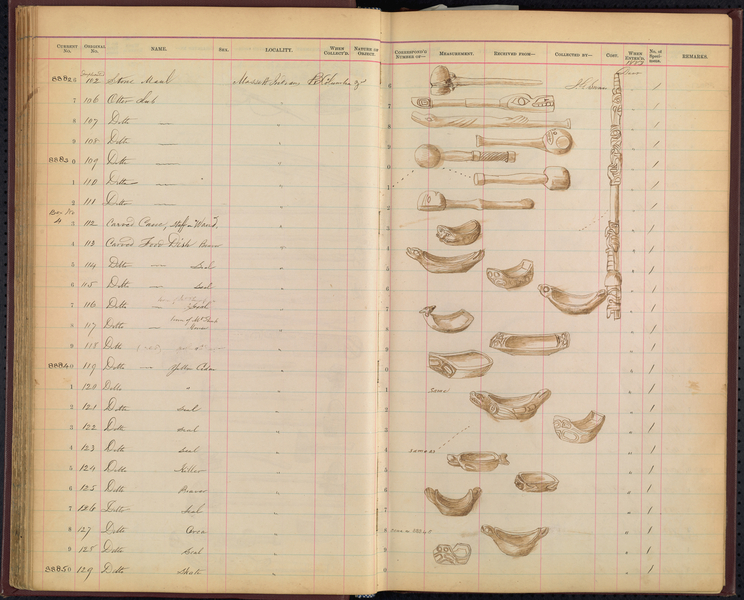
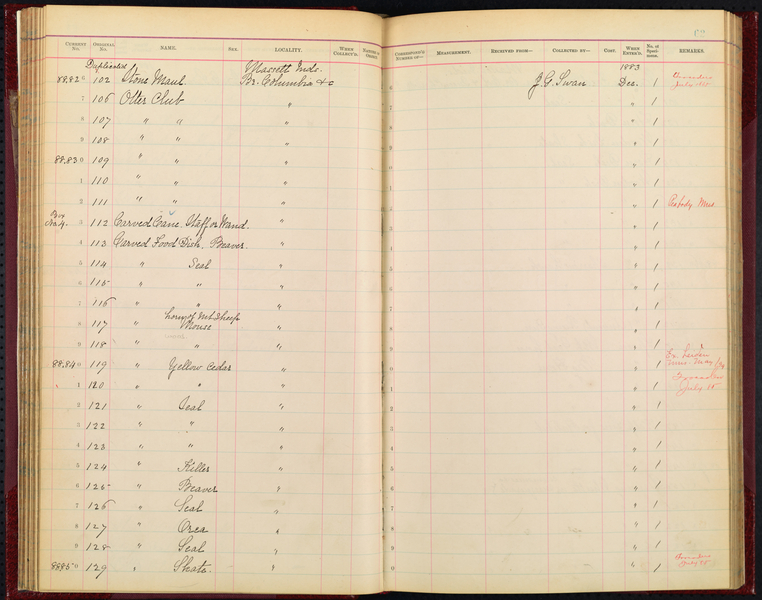
Notes
From card: "Label reads "Haida Indians, Queen Charlotte Indians". Collector's description on reverse. Illus. in The Far North catalog, Nat. Gall. of Art, 1973, p. 272. 4/17/67: loan data: worm holes - ok, some splits. 4/18/67: loaned to Vancouver Art Gall. 12/13/67: returned by Vancouver. Loaned to the National Gallery of Art October 20, 1972. Returned 5-29-73. Loaned to Renwick Gallery 2/11/82. Returned 1983. Lent to Canadian Embassy, Nov. 19, 1991. Loan returned Nov. 20, 1991. Illus.: Hndbk. N. Amer. Ind., Vol. 7, Northwest Coast, Fig. 14 right, pg. 253." Handbook of North American Indians caption: Ceremonial staff. Wand of office held by a chief when giving out gifts at the potlatch. When a recipient was named, the staff was thumped on the floor boards. Staff carved in 2 jointed sections. Whe pulled apart at the socket, the chief retaining one section in each hand, the distribution of presents began (Niblack 1890:272). Collected by J.G. Swan at Masset, B.C., 1883; length 82.2 cm.From second card: "Collector's description: "Taski or carved cane held by chief when distributing presents, formerly highly valued". Upper - whale & crow. Middle - sparrohawk Skamison. Lower - beaver eating mouse. "Taski very ancient, carved to represent one of the columns in front of chiefshouse. This is in two sections, one fitting in a socket to the other. Held in chiefs hand as a baton or wand of office while distributing presents." - Swan's invoice and descriptive catalogue.. [From Celebration: A World of Art and Ritual, exhibit catalogue for Renwick Gallery exhibit, 1982-83:] Speaker's Staff, ca. 1830-60, ... wood, 32 3/8 x 2 (82.2 x5). Men of position often kept speakers to make their public announcements, such as calling out recipients' names at potlatches. Professional speakers carreid staffs like the one shown here, but this particular staff was used by a chief himsel when distributing gifts. In traditional Northwest Coast Indian societies, where all legitimacy came from the past, a chief stood as symbol of his house, and the carved speaker's staff he or his representative held signified his authority - analogously to the way a totem pole signified the authority of the house it stood beside. Holding such a staff indicated that the power to distribute gifts in the present derived from events that occurred in the mythic past. This particular staff, which is incomplete, shows (top to bottom) figures of Raven, Whale, Crow, Sparrowhawk, Beaver, and Mouse."SI ARCHIVE DISTRIBUTION DOCUMENTS SAY SENT TO PEABODY MUSEUM, HARVARD, MASS. 1887.
Item History
- Made in Masset, British Columbia, Canada
- Collected by James G. Swan in Masset, British Columbia, Canada during 1883
- Received on December 21, 1883
What
- Name
- Carved Staff Or Wand
- Identification Number
- E88833-0
- Type of Item
- staff
Who
- Culture
- Haida
- Field Collector
- James G. Swan
Where
- Holding Institution
- National Museum of Natural History
- Made in
- Masset, British Columbia, Canada
- Collected in
- Masset, British Columbia, Canada
When
- Collection Date
- during 1883
- Acquisition Date
- on December 21, 1883
Other
- Accession Number
- 013804